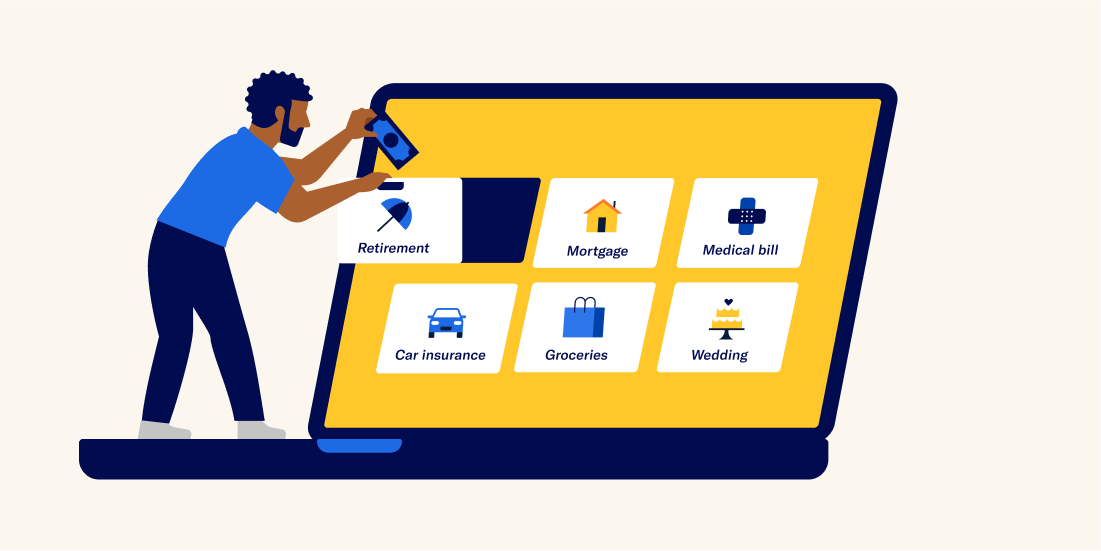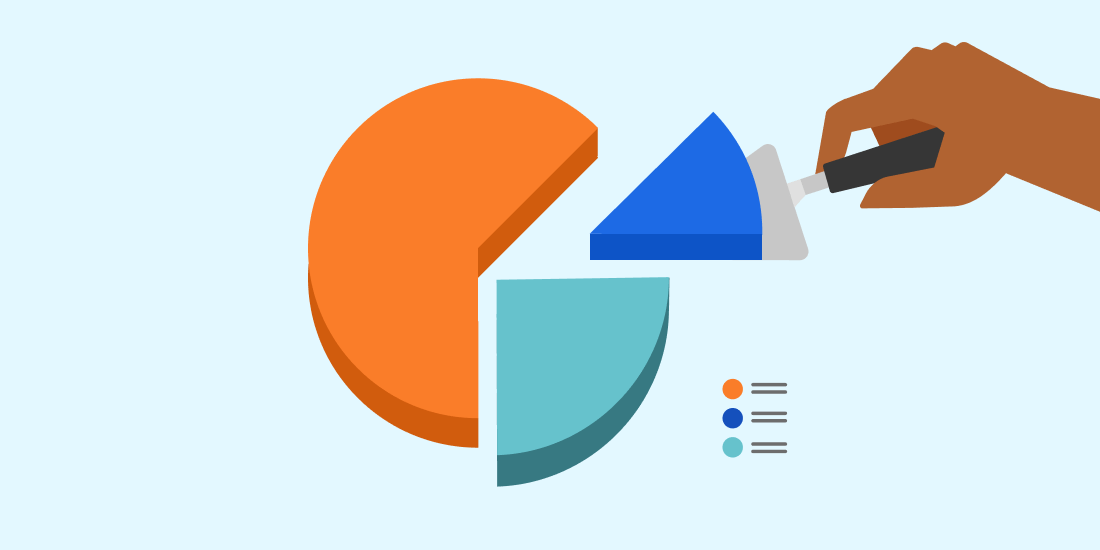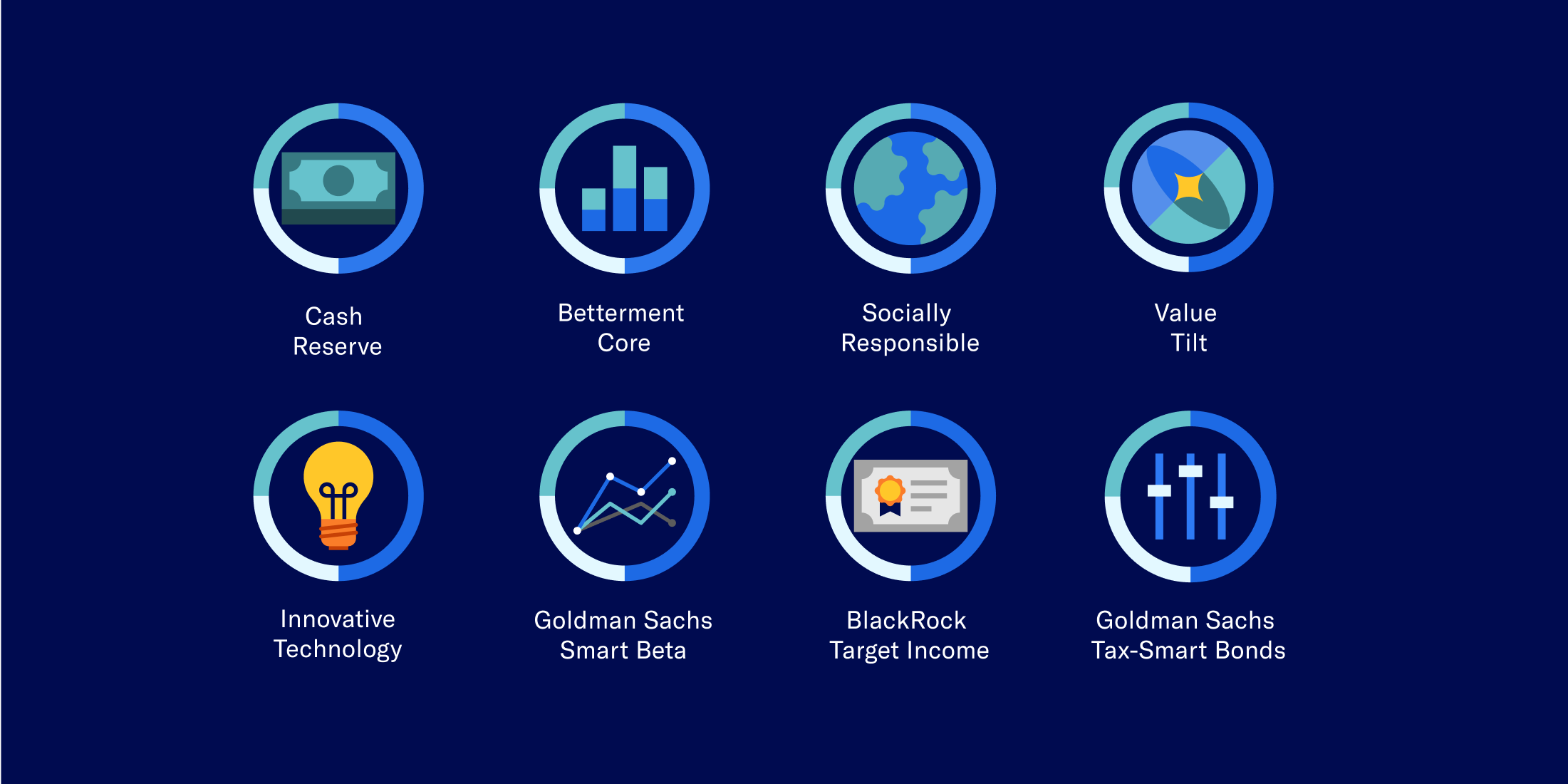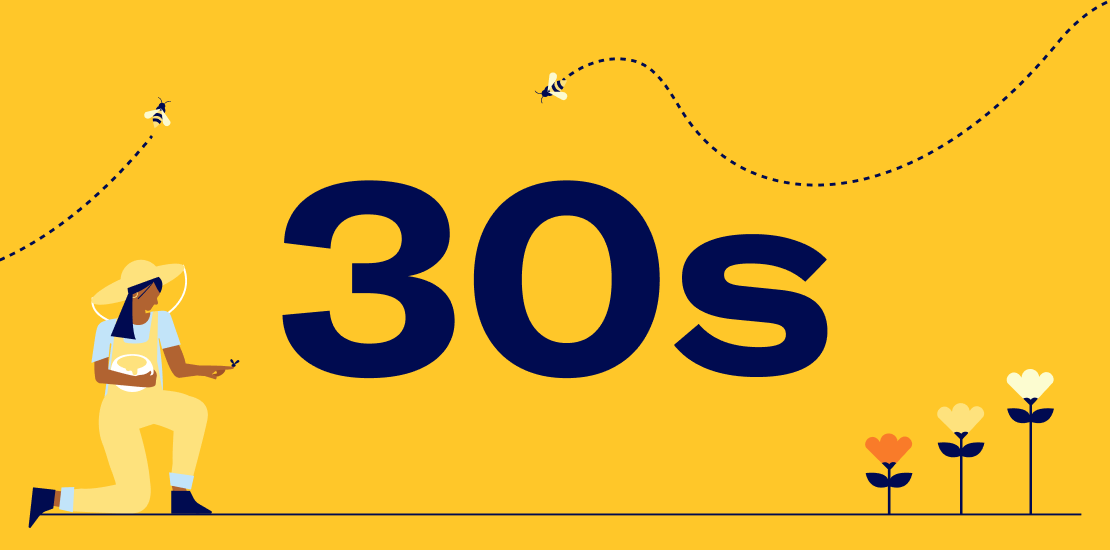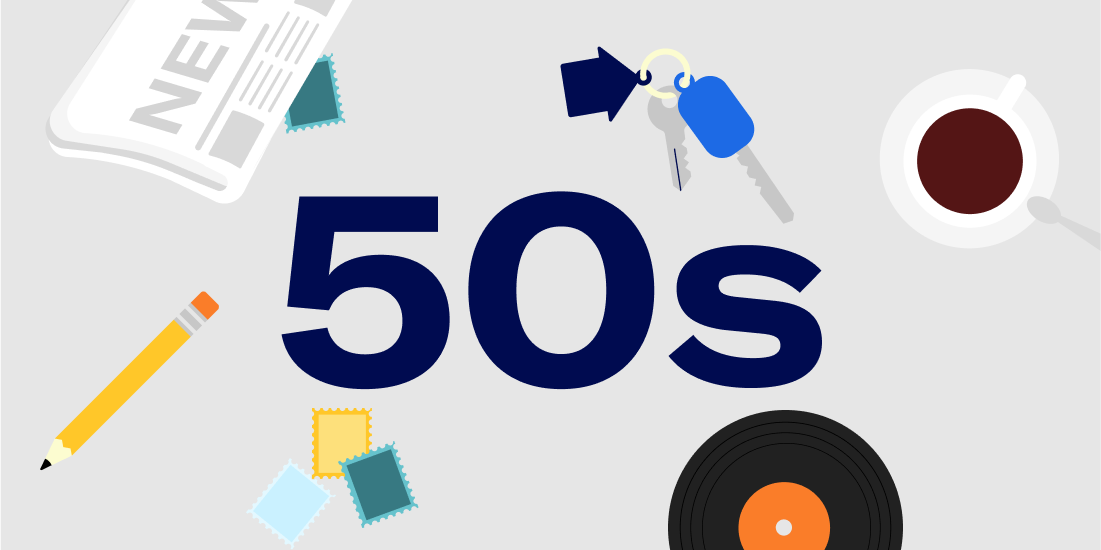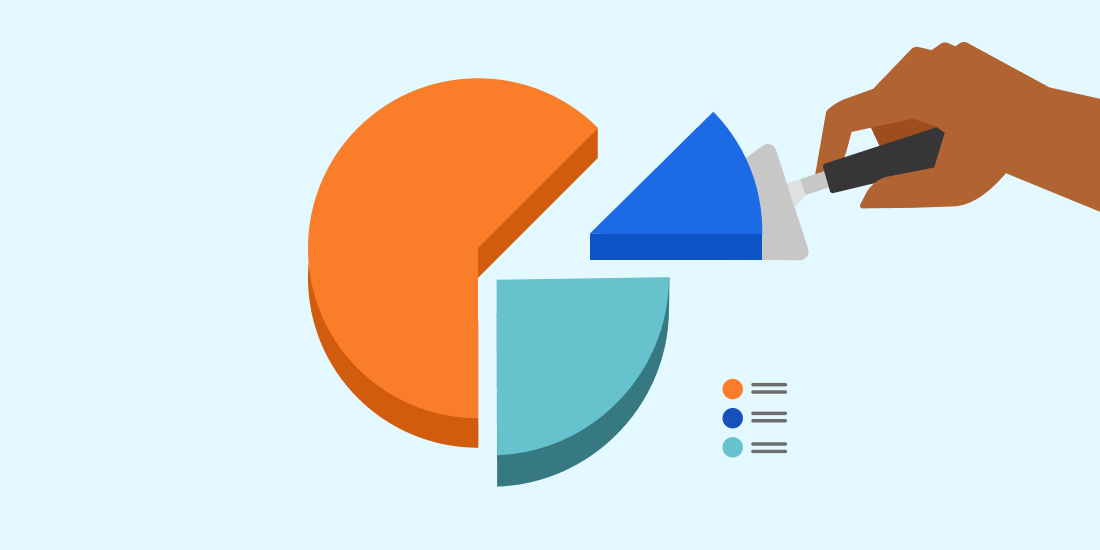My 401(k). My future.
Use the resources below to make the most of your 401(k) plan and strengthen your financial wellness.

Most Recent Posts
-
Making sense of market volatility
Making sense of market volatility During times of market turbulence, it may be tempting to move your money to safer ground. But it’s important to consider the long-term impact of your decisions. As we've seen recently, the stock market can experience significant fluctuations, rising one day and declining the next. With market swings, tariff announcements, and policy changes flying about, you may be wondering what to do and whether now is the time to take action. You’ll hear from many financial advisors, including Betterment, that volatility is natural and often something you simply need to ride out. Which is true. While the temptation to move your money to safer ground is understandable, it’s important to consider the long-term impact of your decisions. You could miss out on growth opportunities or trigger a larger tax bill. Instead of taking immediate action, take a moment to think through your investing strategy, your financial needs, and potential next steps. Start with this question: When will I need my money? It’s impossible to time the market perfectly. But having a clear timeline for your financial goals allows you to prepare for volatile moments and even take advantage of them. A longer time horizon means you can afford to ride out downturns, while a shorter one may require different considerations. We’ll walk through four different scenarios based on time horizon and how you can align your volatility strategy with your financial goals. Staying invested at every stage in life If you’re not yet in the market: Waiting for the “perfect” time to invest often leads to missed opportunities. The best time to start is now, with a diversified portfolio that aligns with your goals. If you don’t need the money for decades: Whether we’re talking retirement, education savings, or just a healthy investing portfolio, if you’ve got decades to go, time is your greatest asset. Market volatility is normal, even if it feels chaotic. Staying invested and making consistent contributions over time will allow you to benefit from long-term growth and compounding. If you need the money in the next five to 10 years: Your investments still have time to recover from a downturn, but start thinking ahead. Make sure your portfolio reflects your risk tolerance while maintaining a focus on growth. As you get closer to your end goal, you may want to plan to shift toward a more conservative allocation of stocks to bonds, or even move money into a high-yield cash account. If you’re retired or nearly retired: In this retirement-specific case, you’re already drawing down on your investments (or will soon begin to). Remember that even though you’re “using” this money, you’ll be retired for a while, so you don’t want to miss out on growth entirely. “Have a plan that includes a mix of safe and growth-oriented investments. A cash or bond ‘bucket’ can cover short-term needs, while equities can support long-term growth,” says Betterment financial planner, Corbin Blackwell, CFP®. How Betterment can help you mitigate volatility While you can’t avoid market volatility altogether, you can take proactive steps to manage your money and financial needs during market downturns. Establishing a thoughtful investing strategy now will pay dividends in the future. Here are three things to consider as you determine your approach: Invest in a well-diversified portfolio: By investing in a diversified portfolio, your money isn’t riding the wave of any individual stock, asset type, or even a country’s performance. For example, the Betterment Core portfolio is globally diversified and has delivered 9.0% annual returns (after fees) since inception.1 Consider enabling tax loss harvesting: One silver lining strategy during market downturns is tax loss harvesting—a tax-saving tool that Betterment automates. TLH is the process of selling an asset at a loss (which can happen especially during market downturns) primarily to offset taxes owed on capital gains or income. Build and maintain an emergency fund: You should work to maintain 3-6 months of expenses. These funds should be stored in an account that’s relatively liquid but still provides some level of growth to help keep up with inflation. Depending on your preferences for risk, growth, and liquidity, we offer a few options: Emergency Fund, our investment allocation built specifically for this use case, with 30% stocks and 70% bonds BlackRock Target Income, our 100% bond portfolios Cash Reserve, our 100% high-yield cash account The big picture If you remember nothing else, remember this: The most important thing you can do is avoid making rash decisions based on short-term market movement. Betterment is here with you every step of the way, helping ensure you make the most of your money, whether the market’s up or down.
-
Taxes made simple: Getting the most out of your retirement accounts
Taxes made simple: Getting the most out of your retirement accounts Practical tips to help you optimize your taxes when it comes to retirement planning. When it comes to taxes and your retirement account, a little planning and knowledge can go a long way. This guide covers key planning areas to help optimize your taxes through retirement accounts. In this guide, we cover: Reporting and filing taxes: Traditional and Roth accounts Contribution limits for traditional and Roth accounts Tax benefits of traditional and Roth contributions Reducing your tax bill with the Saver’s Credit Managing withdrawals and Required Minimum Distributions (RMDs) Reporting and filing taxes Taxes aren’t always fun, but here are a few tips to make them easier. How to report traditional and Roth contributions on your taxes When you contribute to a retirement account, whether it’s a 401(k) or an IRA, the way you report it on your tax return depends on the type of account: Traditional accounts: These contributions are generally tax deductible because they're made with pre-tax dollars, so you’ll report them on your tax return. This means that when you contribute to your traditional 401(k) or IRA, your taxable income is reduced by the amount of your contribution, which can lower your tax bill for the year. However, you’ll pay taxes on withdrawals later in retirement. Roth accounts: If you're contributing to a Roth 401(k) or an IRA, those contributions are made with after-tax dollars, so they don't lower your current taxable income. You won’t report these contributions on your tax return. Wondering if an IRA is right for you? Read our blog to see the potential benefits of an IRA in addition to your 401(k). Three practical tax filing tips When you’re ready to file, keep these tips in mind to help everything go smoothly. 1) Use tax preparation software or consult a professional Filing your taxes accurately is essential to capture all your retirement-related benefits. Whether you opt for user-friendly tax software or choose to work with a tax professional, the goal is to ensure you’re making the most of every deduction and credit available. 2) Keep detailed financial records year-round Staying organized is key! Keep a detailed record of all your contributions, receipts, and financial statements throughout the year. This practice not only simplifies tax filing but also ensures you don’t miss any valuable deductions or credits. Plus, some tax preparers will charge an extra fee for disorganized files and paperwork. 3) Use electronic filing for faster refunds If you’re looking to streamline the process even further, consider filing electronically. E-filing is fast and secure, and typically leads to quicker refunds, allowing you to reinvest your money sooner. Contribution rules and limits for 401(k)s and IRAs Each year, the IRS sets limits on how much you can contribute to your 401(k) and IRA. Staying within these limits not only helps you avoid penalties but also ensures you’re making the most of any tax advantages that are available to you. If you’re 50 or older, you’re allowed to make “catch-up contributions.” These extra contributions can boost your retirement savings and offer additional tax advantages—whether you’re in a traditional or Roth account. It’s a smart way to ensure you’re on track as retirement draws nearer. For the 2024 tax year, contribution limits are: 401(k) contributions: Under age 50: You can contribute up to $23,000. Age 50 and older (Catch-up contribution): You can add an extra $7,500, bringing your total to $30,500. IRA contributions: Under age 50: The contribution limit is $7,000. Age 50 and older (Catch-up contribution): The limit increases to $8,000. Tax benefits & savings of retirement accounts At Betterment, we help you automate much of your retirement savings. But even with automation, it’s still good to know the details about the tax benefits so you can select the account type that’s right for your goals. Tax benefits of traditional and Roth contributions There are three potential tax benefits that come from retirement plan contributions: Immediate tax savings (Traditional accounts): Because traditional 401(k) or IRA contributions are made with pre-tax dollars, they lower your taxable income for the year. If you are maxing out your contributions, you could see a significant reduction in your current tax bill, which could even move you to a lower tax bracket, depending on your income level. Tax-deferred growth (Traditional accounts): The money in your traditional 401(k) or IRA grows tax-deferred until you withdraw it in retirement. This allows your investments to compound without being eroded by annual taxes, potentially leading to a larger nest egg. Tax-free withdrawals (Roth accounts): Because Roth 401(k) and IRA contributions are made with after-tax money, qualified withdrawals in retirement are completely tax-free. This can be especially beneficial if you expect to be in a higher tax bracket later on. Reducing your tax bill with the Saver’s Credit For those with low- to moderate-income, the Saver’s Credit is a real game-changer. This credit rewards you for putting money into your retirement accounts by reducing your tax bill directly. It’s like getting a bonus just for saving for the future. You're eligible for the credit if you meet the following: Age 18 or older Not claimed as a dependent on another person’s return Not a student The amount of this credit — 10%, 20%, or 50% of contributions, based on filing status and adjusted gross income — directly reduces the amount of tax owed. Triple tax savings from Health Savings Accounts (HSAs) HSAs are often overlooked as a retirement planning tool. These accounts offer a triple tax advantage: Tax-deductible contributions: These contributions lower your taxable income, reducing the amount of income on which you pay taxes for that year. Tax-free growth: Your investments can increase in value without being taxed annually, allowing your earnings to compound more effectively over time. Tax-free withdrawals for qualified medical expenses: You can withdraw funds to cover eligible healthcare costs without incurring taxes on those amounts. This makes HSAs a powerful way to cover healthcare costs in retirement while also benefiting from significant tax savings. Withdrawals and required distributions Saving for retirement is just the start. As you get into your 50s, it's wise to start planning for how and when to take distributions. Tax implications of early withdrawals Taking money out of your retirement accounts before age 59½ can come with a hefty tax penalty. Not only will you owe regular income tax on the amount, but you might also face an extra 10% penalty. It pays to plan ahead and avoid tapping into your funds prematurely. If you’re in your 50s, check out these four practical tips to help plan for retirement. Understanding Required Minimum Distributions (RMDs) For those aged 73 and older, the IRS requires you to start taking a minimum amount from your retirement accounts each year—known as Required Minimum Distributions (RMDs). Missing an RMD can lead to significant penalties, so it’s important to calculate and plan for them. To learn more about the details of RMDs, read our blog, What is a required minimum distribution?
-
How to plan for retirement
How to plan for retirement It depends on the lifestyle you want, the investment accounts available, and the income you expect to receive. Most people want to retire some day. But retirement planning looks a little different for everyone. There’s more than one way to get there. And some people want to live more extravagantly—or frugally—than others. Your retirement plan should be based on the life you want to live and the financial options you have available. And the sooner you sort out the details, the better. Even if retirement seems far away, working out the details now will set you up to retire when and how you want to. In this guide, we’ll cover: How much you should save for retirement Choosing retirement accounts Supplemental income to consider Self-employed retirement options How much should you save for retirement? How much you need to save ultimately depends on what you want retirement to look like. Some people see themselves traveling the world when they retire. Or living closer to their families. Maybe there’s a hobby you’ve wished you could spend more time and money on. Perhaps for you, retirement looks like the life you have now—just without the job. For many people, that’s a good place to start. Take the amount you spend right now and ask yourself: do you want to spend more or less than that each year of retirement? How long do you want your money to last? Answering these questions will give you a target amount you’ll need to reach and help you think about managing your income in retirement. Don’t forget to think about where you’ll want to live, too. Cost of living varies widely, and it has a big effect on how long your money will last. Move somewhere with a lower cost of living, and you need less to retire. Want to live it up in New York City, Seattle, or San Francisco? Plan to save significantly more. And finally: when do you want to retire? This will give you a target date to save it by (in investing, that’s called a time horizon). It’ll also inform how much you need to retire. Retiring early reduces your time horizon, and increases the number of expected years you need to save for. Choosing retirement accounts Once you know how much you need to save, it’s time to think about where that money will go. Earning interest and taking advantage of tax benefits can help you reach your goal faster, and that’s why choosing the right investment accounts is a key part of retirement planning. While there are many kinds of investment accounts in general, people usually use five main types to save for retirement: Traditional 401(k) Roth 401(k) Traditional IRA (Individual Retirement Account) Roth IRA (Individual Retirement Account) Health Savings Account (HSA) Traditional 401(k) A Traditional 401(k) is an employer-sponsored retirement plan. These have two valuable advantages: Your employer may match a percentage of your contributions Your contributions are tax deductible You can only invest in a 401(k) if your employer offers one. If they do, and they match a percentage of your contributions, this is almost always an account you’ll want to take advantage of. The contribution match is free money. You don’t want to leave that on the table. And since your contributions are tax deductible, you’ll pay less income tax while you’re saving for retirement. Roth 401(k) A Roth 401(k) works just like a Traditional one, but with one key difference: the tax advantages come later. You make contributions, your employer (sometimes) matches a percentage of them, and you pay taxes like normal. But when you withdraw your funds during retirement, you don’t pay taxes. This means any interest you earned on your account is tax-free. With both Roth and Traditional 401(k)s, you can contribute a maximum of $23,500 in 2025, or $31,000 if you’re age 50 or over. Traditional IRA (Individual Retirement Account) As with a 401(k), an IRA gives you tax advantages. Depending on your income, contributions may lower your pre-tax income, so you pay less income tax leading up to retirement. The biggest difference? Your employer doesn’t match your contributions. The annual contribution limits are also significantly lower: just $7,000 for 2025, or $8,000 if you’re age 50 or over. Roth IRA (Individual Retirement Account) A Roth IRA works similarly, but as with a Roth 401(k), the tax benefits come when you retire. Your contributions still count toward your taxable income right now, but when you withdraw in retirement, all your interest is tax-free. So, should you use a Roth or Traditional account? One option is to use both Traditional and Roth accounts for tax diversification during retirement. Another strategy is to compare your current tax bracket to your expected tax bracket during retirement, and try to optimize around that. Also keep in mind that your income may fluctuate throughout your career. So you may choose to do Roth now, but after a significant promotion you might switch to Traditional. Health Savings Account (HSA) An HSA is another solid choice. Contributions to an HSA are tax deductible, and if you use the funds on medical expenses, your distributions are tax-free. After age 65, you can withdraw your funds just like a traditional 401(k) or IRA, even for non-medical expenses. You can only contribute to a Health Savings Accounts if you’re enrolled in a high-deductible health plan (HDHP). In 2025, you can contribute up to $4,300 to an HSA if your HDHP covers only you, and up to $8,550 if your HDHP covers your family. What other income can you expect? Put enough into a retirement account, and your distributions will likely cover your expenses during retirement. But if you can count on other sources of income, you may not need to save as much. For many people, a common source of income during retirement is social security. As long as you or your spouse have made enough social security contributions throughout your career, you should receive social security benefits. Retire a little early, and you’ll still get some benefits (but it may be less). This can amount to thousands of dollars per month. You can estimate the benefits you’ll receive using the Social Security Administration’s Retirement Estimator. Retirement accounts for the self-employed Self-employed people have a few additional options to consider. One Participant 401(k) Plan or Solo 401(k) A Solo 401(k) is similar to a regular 401(k). However, with a Solo 401(k), you’re both the employer and the employee. You can combine the employee contribution limit and the employer contribution limit. As long as you don’t have any employees and you’re your own company, this is a pretty solid option. However, a Solo 401(k) typically requires more advance planning and ongoing paperwork than other account types. If your circumstances change, you may be able to roll over your Solo 401(k) plan or consolidate your IRAs into a more appropriate retirement savings account. Simplified Employee Pension (SEP IRA) With a SEP IRA, the business sets up an IRA for each employee. Only the employer can contribute, and the contribution rate must be the same for each qualifying employee. Savings Incentive Match Plan for Employees (SIMPLE IRA) A SIMPLE IRA is ideal for small business owners who have 100 employees or less. Both the employer and the employee can contribute. You can also contribute to a Traditional IRA or Roth IRA—although how much you can contribute depends on how much you’ve put into other retirement accounts.
Explore our article library
Getting started
-
![]()
Getting started with your Betterment 401(k)
Getting started with your Betterment 401(k) Your employer chose Betterment as its 401(k) provider - so come on in and be invested for your future. Traveling around the world. Taking up a new hobby. Spending more time with family and friends. Whatever your retirement dreams are, a 401(k) can help you make them a reality. And luckily for you, your employer chose Betterment to manage its 401(k) plan. Top 3 perks of a 401(k) Participating in your employer’s 401(k) plan is a good idea for many reasons – here are the top three. With a 401(k), you can: Contribute via convenient, automatic payroll deductions (one less thing to think about!). Save on taxes, whether those savings happen today with a traditional 401(k) or at retirement with a Roth 401(k) (and the cool thing is that you can use both!). Invest more than with other retirement vehicles (individual retirement accounts (IRAs) have lower caps on how much you can put in). All said, saving for retirement with a 401(k) is basically a no-brainer. Without a regular paycheck in retirement, you’re going to rely on your own savings. And we’re not talking about cash-under-the-mattress savings or even safe-in-the-bank savings - but invested savings, which is what you get with a 401(k). (Why is it so critical to invest for long-term goals, rather than simply saving money in the bank? To tackle one word: Inflation.) Top Betterment features Betterment offers several features to help you pursue your retirement goals: Goal based – Your 401(k) will automatically be a “Retirement” goal on the Betterment platform (you could add additional goals for other things if you want). Our goal-based platform looks at your timeline until retirement and the desired amount you want to save, to help you invest in an expert-built portfolio. Low cost – Our approach uses low-cost exchange-traded funds (ETFs) so more of your money stays invested in your account. High tech –Certain portfolio strategies and goal types are automatically rebalanced and adjusted over time, and our tax-smart tools are available to you at no added management fee. Personalized – Betterment helps you work towards your long- and short-term financial goals with personalized advice. It’s easy to get started Betterment will contact you via email to set up your account via a secure link that’s unique to you. If you haven’t received an invitation from us to set up your account, please contact us. Once you’ve set up your account, be sure to set a contribution rate to help you pursue your goals (although starting with anything is far better than nothing!) and you’ll want to initiate a rollover of any old 401(k)s into your new Betterment 401(k). Were you automatically enrolled in your plan? If so, you still need to set up your account with a username and password. If your employer has determined an automatic contribution rate for your organization, know that you can adjust this in your account at any time. Betterment strives to make saving and investing for retirement easy. But we know you still might have questions, so we’re here to help: Explore our 401(k) employee resources Send us an email: support@betterment.com Give us a call: (718) 400-6898, Monday through Friday, 9:00am-6:00pm ET -
![]()
How Auto-Enrollment in a 401(k) Plan Works: Benefits and What It Means for Your Retirement Savings
How Auto-Enrollment in a 401(k) Plan Works: Benefits and What It Means for Your Retirement Savings The best time to start saving for retirement is…now. Features like auto-enrollment and auto-escalation make it easy to save for your golden years with little effort on your part. If you’re unfamiliar with these features, keep reading to see how they can help you start saving today for tomorrow. While auto-enrollment and auto-escalation have been around for years, some employers are now required to turn on these features due to SECURE 2.0, legislation aimed at helping employees save for retirement. These features are designed to automatically enroll employees into their company’s 401(k) plan and increase contributions over time. So, how does auto-enrollment work, and what does it mean for your retirement savings plan? Scroll down to learn more about: What is auto-enrollment Benefits of auto-enrollment How to check if you've been auto-enrolled in your company’s 401(k) Changing your contribution rate How Betterment at Work can help you optimize your saving strategy What is auto-enrollment in a 401(k)? There are plenty of reasons why people hesitate to set money aside for retirement—daily expenses, not knowing how much to save, not knowing how to sign up, to name a few— but auto-enrollment can make it easy to get started. Companies will auto–enroll new hires at a default rate—typically 3-8%—which you can adjust at any time. Once your money is in the market, you’ll benefit from a little thing called compound interest: The interest your money earns also accrues interest over time. Let’s explore other ways auto-enrollment makes saving for retirement easy… Benefits of auto-enrollment in a 401(k): Automatically save for retirement: Starting a new job can be overwhelming with so many new benefits to consider (healthcare, life insurance, etc), but with auto-enrollment, you can start saving for retirement immediately without having to take any action. Employer match contributions: If your employer offers a match, auto-enrollment ensures you won’t miss collecting this sweet financial boost. Tax advantages: Good news! Since 401(k) contributions are made pre-tax, this lowers your taxable income —which can help you hold onto more of your hard-earned cash. Early and consistent long-term saving: You can stay on track with minimal effort, thanks to auto-escalation. If you’re auto-enrolled, your default rate will increase 1% each year, to a maximum set by your employer (no greater than 15%), unless you adjust the contribution rate yourself. Whenever you log in and adjust your contribution rate, auto-escalation is turned off. By incrementally upping your contribution rate, auto-escalation ensures you’re saving more over time—and simplifies the decision-making process. How to check if you’ve been auto-enrolled in your company’s 401(k): If you’ve never logged in before, you’ll first have to activate your account. Visit betterment.com/accountaccess to get started. Once you’re in, you can see the status of your account by selecting the “Retirement” goal from the left-hand side of the screen. Click on “Activity” to review your past contributions. It’s a good idea to monitor your contribution rate, and increase it when you can. Many experts recommend contributing 10–15% of your paycheck towards retirement so you have enough to live on. 10-15% may sound like a lot, so start with anything you’re comfortable with. Many auto-enrollment plans enroll employees at a low contribution rate, like 3% – but it’s important to keep in mind that that’s just a starting point. The point of auto-escalation is to keep it moving into that sweet spot of 10-15% over time. As always, Betterment is here to help you confidently plan for retirement, with the tools and resources you need to make smart decisions for your money. Remember, small, consistent contributions can really add up. With auto-enrollment and auto-escalation, you can put your savings on auto-pilot, so you can focus on the rest of your life. Get started -
![]()
How to pick a 401(k) contribution rate
How to pick a 401(k) contribution rate Your 401(k) contribution rate - also known as a deferral rate or savings rate - is a key part of a successful retirement strategy. You’ve taken that first step and have set up your Betterment 401(k) account - well done! One important piece to consider next is your contribution rate - how much from each paycheck will go into your account? With your Betterment 401(k), you could use a percentage or a fixed dollar amount, whichever you prefer. Here are a few other things to consider: Were you automatically enrolled? Many employers choose to automatically enroll their employees in the plan with a default contribution rate of 3% – if you're not sure, please check with your employer or take a look in your Retirement goal. Keep in mind, whatever the default contribution rate is, it’s just a starting point. You can (and probably should) increase that contribution rate at any time in your account. At least a decade without a paycheck Most experts recommend contributing 10%–15% of your paycheck to have enough to last you through retirement - which could be 20-30 years considering how long people are living! If you retire at age 65, with a healthy lifestyle and no major risk factors, you could live well into your 80s or 90s. That means you'll want to set yourself up for living off your personal savings and investments for about 20 years! Starting small is better than nothing If 10-15% of your paycheck sounds absurd to you right now - deep breath, think of that as something to aim for. You can start with something smaller, maybe 5 or 6%, and slowly but surely increase your savings rate every year – your birthday? Give yourself a gift and increase it by 1%. Your work anniversary? Cheers to you, bump it up again. And those 1% increases can actually be a big deal. Go for the max Because of its tax benefits, the IRS sets a limit on how much you can put into your 401(k) every year. So you could aim to contribute as much as the IRS allows! For people 50 and over, the limit is higher, which is referred to as “catch-up contributions.” And if you really want to be an over-achiever, you can also contribute to an IRA, an individual retirement account, to save even more. Tax considerations With your Betterment 401(k), you can make contributions into a traditional 401(k) account and/or a Roth 401(k). There are tax benefits to both: Traditional 401(k): Contributions are deducted from your paycheck before taxes are withheld, which can lower your taxable income. Both your contributions and investment earnings are “tax-deferred,” meaning you won’t pay taxes on what you contributed to the account as well as any earnings until you withdraw the money at retirement. In other words, save on taxes now, pay taxes later. Roth 401(k): Contributions are made with after-tax dollars so your withdrawals—both the contributions and earnings—are tax-free once you decide to retire (minimum age, 59½), and as long as you’ve held the Roth account for at least five years. In other words, pay taxes now, no taxes later. Remember that you can use both! Say you want to contribute 10% towards your retirement? You can put 5% into a traditional 401(k) and 5% into the Roth 401(k). This is one way you can balance your tax exposure. If you already have your account set up, log in today to adjust your contribution rate or reassess your traditional and Roth contributions. Haven’t started saving in your Betterment 401(k) yet? Check your email for an access link from Betterment, or get in touch: Send us an email: support@betterment.com Give us a call: (718) 400-6898, Monday through Friday, 9:00am-6:00pm ET
Investing with Betterment
-
![]()
How to invest during market highs
How to invest during market highs Betterment experts weigh in on how to override anxiety, and be invested when the market climbs. While we invest for our own reasons, we get into the market to take advantage of potential price appreciation and income produced by financial assets. But anxiety can get the best of even the most eager investors. What if I buy when the market peaks, and then immediately declines? Sound familiar? As any investor knows, psychological aspects can cloud one’s judgment when it comes to money. We’re encouraged to minimize risk and maximize returns, whenever possible. So, a market that’s going up-up-up, can leave some investors feeling hesitant about paying premium prices—instead of opting for undervalued stocks, or lower price points. So how do we override the Fear of Purchasing at All-time Highs (or FOPAH, for short)? Is it best to dive in, or wait for a potential pullback? Our investment experts believe one of the best things you can do is face your fear, wading into the market. In practice, it can take a long time before that pullback comes, during which there may be further positive market returns. For instance, between 2012 and 2017, the S&P 500 did not experience a pullback greater than 12%. Oftentimes when a pullback does arrive, it’s not heralded as a positive outcome—but an ominous event, accompanied by scary headlines that spark new fears of further downturn. This can all lead to additional hesitancy around buying stocks. While there's no "perfect" time to invest, we can still be confident that choosing a diversified portfolio of investments is a smart way to help achieve long-term financial goals. To ease your fears, work out approximately how much time you’ll need to save up for your own goals. Long-term goals, like saving for college or a deposit on a house, can take time. And that’s a good thing! The longer your time horizon (the period of time you plan to keep your savings invested in the market), the more confident you can be that your money will grow by the point you want to withdraw it. Even if the market has already recently run up when you go to invest, a prolonged time horizon should help quell a pullback in the nearterm. Despite volatility, the stock market tends to trend upwards over longer periods. By maintaining a long-term perspective, you can position yourself to benefit from the market's long-term growth potential, which can outweigh short-term losses. Dating back to 1988, if you decided to invest on any given trading day, 65% of those days would have resulted in a positive investment return over the following month. The share of days with positive returns goes up as that trailing holding period extends. Historically, no matter when an investment was made between 1988 and 2009, the market was higher 100% the time just 15 years later. Short-term goals, like saving for a vacation or a home reno, have a shorter time horizon—meaning your money has less time to grow in the market. However, it's worth remembering that historically, investing at all-time highs has not resulted in lower future returns compared to investing on any other given day. After the S&P 500 reaches an all-time high, average returns tend to be slightly higher than during periods when the index has not soared so high. Practical steps to help ease your anxiety: Set up recurring deposits: When you commit to investing a fixed amount of money at set intervals over time, your losses could potentially be smaller if the market does dive in the near term. Plus, you will still have cash ready to buy at lower prices. While this comes with the risk of later buying at higher prices, it can help override the emotional pressure of trying to time the market. Diversify: Consider adding other asset classes, regions, and company sizes in your portfolio (as we do at Betterment). Our automated portfolio rebalancing is designed to maintain your investment portfolio's target asset allocation over time. Betterment continuously monitors your portfolio to see if the current allocation deviates from your target allocation—due to market fluctuations or changes in the value of your investments. Our auto-adjust feature can also help right-size the risk level of your portfolio by reducing the share of the portfolio allocated to more volatile stocks, and increasing the share allocated to bonds as your time horizon shortens. -
![]()
Why diversify outside of the US?
Why diversify outside of the US? The outperformance of US stocks in recent history has led some investors to question whether they should invest outside the US at all, yet there remains compelling reasons to diversify globally. US investors often think of the S&P 500 Index (an index of the largest companies in the US by market capitalization) when referring to the performance of the stock market. This is not surprising to hear as most US based investors exhibit a “home bias”, where they focus their investing domestically and less on international. In a Vanguard 2020 study, households they surveyed had 81% of their portfolio allocations invested in the US. On top of that, US stocks have set a high bar for performance globally, outpacing the gains in stocks across Europe, Japan, and emerging markets over the last decade. It’s become natural to ask, “Can’t I get better returns just sticking with US stocks? Why would my Betterment portfolio have any allocation to companies outside of the US?” Currently, Betterment’s Core portfolio strategy in the 100% stock allocation has a target allocation of more than 40% in international equities. Below, this piece will cover reasons diversifying internationally makes sense, including: The global market portfolio is a starting point for asset allocation There’s no guarantee that US stocks will continue to outperform Diversification creates the potential for more consistent returns Investing in the global market portfolio The short answer is that Betterment constructs all of our portfolios to be representative of the makeup of global investable assets as a whole, and you’ll find that around 40% of the world’s equity assets are invested outside of the US. International investments play an important role in reducing the risk of concentration in any one particular country within your portfolio. There’s no guarantee of continued US outperformance We’ve all heard the phrase “past performance is not indicative of future results.” For instance, stocks of one region can string together multiple years of outperformance relative to others before that trend reverses and it enters a period of underperformance. The chart below illustrates this tug of war between US and international developed stocks. While the outperformance experienced by US stocks over the last decade is striking, international developed stocks dominated in the wake of the dot com bubble in the decade before that. “International stocks” is represented by the MSCI EAFE Index. “US stocks” is represented by the MSCI US Index. Past performance is not indicative of future results. You cannot invest directly in the index. Going back further into history, in the ‘80s international developed stocks actually outperformed US stocks to the same extent that US stocks have outperformed since 2009. We believe, and many on Wall Street will admit, that trying to time these cycles can be extremely difficult and a more consistent return may be achieved by holding exposure to each geographical region’s stocks over the long-term. Before US stocks’ strong run in recent history, investors may have been tempted to allocate more to emerging market stocks based on their momentum during the 2000s. Emerging market stocks had higher returns than US equities in eight of the ten years before 2011. If an investor piled into emerging market stocks in 2011 because of their decade long track record of outperformance, they would have largely missed out on the strong gains in the US over the following 10 years. There also may be reason to believe that markets outside the US have the potential to post strong gains over the next decade. Based on certain valuation metrics, US stocks appear more expensive than their global peers. For example, companies in places such as emerging markets source much of their revenue from quickly growing economies, which may enhance profitability in the future. Diversification helps avoid drawdowns and creates the potential for consistent returns International markets are not perfectly correlated with the US, meaning they do not move in lockstep. Allocating to markets around the world therefore promotes diversification, helping buffer portfolios from the heightened volatility of individual markets. The chart below ranks the returns of Betterment’s tenured Core portfolio strategy against different regions and asset classes across calendar years, illustrating diversification in action. The Core portfolio, with a 90% allocation to stocks and 10% allocation to bonds, consistently avoided losses compared to the poorest performing assets of recent history. This was also evident in 2020 where diversification provided downside protection as the US fell into a short recession and battled a pandemic. Investors focused on using the S&P 500 Index to benchmark performance will highlight that the index outperformed our Core portfolio in the time periods displayed. And while the strength of the US market is undeniable, it is important to not overlook the fact that our Core portfolio still has a sizable allocation to the US. Having a strategic, well-diversified portfolio allows investors to obtain exposure to not only markets that outperform like the US, but also to international stock markets and other asset classes that can dampen the downside in years where US stocks underperform. S&P 500” (US Large Caps) is represented by the S&P 500 Index. “EM” (emerging markets) is represented by the MSCI Emerging Markets Index. “US Small Caps” is represented by the Russell 2000 Index. “EAFE” (international developed markets) is represented by the MSCI EAFE Index. “US REITs” is represented by the MSCI US REIT Index. “US High Yield” is represented by the Bloomberg US Corporate High Yield Index. “Global Agg bonds” is represented by the Bloomberg Barclays Global Aggregate Bond Index. “Commodities” is represented by the Bloomberg Commodity Index. “BMT Core 90/10” represents the Betterment Core Portfolio strategy in the 90% stocks/ 10% bonds taxable allocation. Performance information for the Betterment allocation is based on the time-weighted returns of Betterment taxable portfolios with primary tickers that are at the target allocation every market day (this assumes portfolios are rebalanced daily at market closing prices). Dividends are assumed to be reinvested in the fund from which the dividend was distributed. Betterment allocations reflect portfolio holdings as of periods stated and include an annual 0.25% management fee. This does not include deposits or withdrawals over the performance period. These allocations are not representative of the performance of any actual Betterment account and actual client experience may vary because of factors including, individual deposits and withdrawals, secondary tickers associated with tax loss harvesting, allowed portfolio drift, transactions that do not occur at close of day prices, and differences in holdings between IRA and taxable portfolios. Investing in securities involves risks, and there is always the potential of losing money when you invest in securities. Market conditions can and will impact performance. Past performance is not indicative of future results. Market performance information is based on the returns of indexes tracked by Betterment, using returns data from sources and time periods listed. Performance is provided for illustrative purposes to represent broad market returns for asset classes that may not be used in all Betterment portfolios. The asset class performance is not attributable to any actual Betterment portfolio nor does it reflect any specific Betterment performance. As such, it is not net of any management fees. The performance of specific funds used for each asset class in the Betterment portfolio will differ from the performance of the broad market index returns reflected here. Past performance is not indicative of future results. You cannot invest directly in the index. At Betterment, we build portfolios and provide advice on portfolio allocations that should be suitable for each investor’s risk tolerance to help them reach their investment goals. Diversifying across stock markets, whether in the US or elsewhere in the world, helps in that continuous effort. It may be tempting to chase the high returns that US stocks have posted in recent history, anticipating that the US equity market will continue to outperform, but investors should recognize that future outperformance is near impossible to predict and that they should position themselves for a wide range of possible outcomes accordingly. This is why as a foundation of Betterment’s portfolio construction process, we start with a diversified global market portfolio. -
![]()
Get to know your portfolio options
Get to know your portfolio options Betterment helps take the stress out of investing with a range of expert-built portfolio options, made of generally low-cost ETFs (exchange-traded funds). Given the breadth of available choices, it’s natural to wonder which portfolio is right for your financial situation. The good news is each option has been designed to help investors, like you, reach their financial goals. While all of our portfolios combining stocks and bonds possess similar expected risk and return profiles, Betterment will recommend an investment allocation for you, based on the time horizon and goal type you select. You can also adjust your diversification and risk preferences. For most portfolios that hold both stocks and bonds, our “auto-adjust” feature systematically glides your portfolio(s) to a lower overall risk level as you get closer to, enter, and progress through retirement. This feature is very similar to a “glidepath,” which is found in target-date funds (TDFs). It’s great for those that want to “set it, and forget it.” With that, let’s review your portfolio options. Core Well-diversified, low-cost, and built for long-term investing, the Core portfolio features a broad collection of ETFs made of thousands of stocks and bonds from around the world. This is the default investment option for those who do not specify a portfolio strategy. Innovative Technology A well-diversified portfolio allocated similarly to the Core portfolio, but with a subset of stocks allocated to high-growth potential companies such as clean energy, semiconductors, robots, virtual reality, blockchain, and nanotechnology. This comes with increased exposure to risk. Value Tilt A well-diversified portfolio allocated similarly to the Core portfolio, but with a subset of the stocks allocation focused on potentially undervalued U.S. companies, according to certain financial metrics. Broad Impact A well-diversified portfolio that invests in companies that rank highly on environmental, social, and corporate governance (ESG) criteria. Climate Impact A well-diversified portfolio that invests in companies working to lower carbon emissions, fund green projects, and divest from holders of fossil fuel reserves—while still designed for potential long-term growth. Social Impact A well-diversified portfolio that invests in companies actively working toward minority empowerment and gender diversity as part of its long-term strategy. Goldman Sachs Smart Beta Targets companies that have potential to outperform the broader market over the long term. Diverse and relatively low-cost, this portfolio comes with higher exposure to risk. BlackRock Target Income A 100% bond portfolio with different income yields to help protect you against stock market volatility. This portfolio option is more suitable for investors with shorter time horizons, or for those that are seeking to generate income. Flexible portfolio A Flexible portfolio gives you more control over your investments, and allows you to modify the individual asset class weights to best fit your preferences. We’ll provide guidance on the risk exposure and diversification of your portfolio, based on your adjustments. See when using a Flexible portfolio might be right for you. After you make a portfolio selection, Betterment will handle the rest. Here are some things to keep in mind: All portfolios benefit from auto-rebalancing, which returns the value of all allocated funds back to the target weight (after the portfolio drifts with market movements). Rebalancing may be subject to a drift threshold and account balance minimum. Although changing a portfolio’s asset allocation and fund selection can cause changes in the portfolio’s performance, Betterment has designed each portfolio to be suitable in terms of its riskiness and return potential for a given time horizon and level of risk. Which is to say, you should feel comfortable choosing a portfolio based on your convictions and values. If you’re uncertain where to start, the Betterment Core portfolio is a great way to go—and it is the portfolio used by the majority of Betterment users. Keep in mind: As your investment fiduciary, Betterment monitors market action and portfolio performance, and will periodically update asset allocation or include more cost-efficient underlying funds to help optimize your portfolio performance. We’re here to help you make decisions that bring your goals into focus, and be invested in your future.
Next-level planning
-
![]()
Traditional and Roth 401(k)s
Traditional and Roth 401(k)s Not sure what the difference is between traditional and Roth contributions for your 401(k)? We’ll explain. Ever hear the terms traditional 401(k) and Roth 401(k) thrown around and wonder – what are they? Should I be using them? Are these the keys to untold levels of wealth and financial security?! Easy does it. There are no secret weapons or silver bullets for securing a financially fit future. That said, traditional 401(k)s and Roth 401(k)s can be important tools when building your retirement strategy, so let’s make sure you know what they are. And a fun fact to know right away: you can use both. What do they have in common? A traditional 401(k) and Roth 401(k) are tax-advantaged accounts that allow you to save and invest for retirement (the tax advantages given to these types of accounts are not available in many other investing accounts). They’re available to you as a workplace benefit offered by your employer, and they’re funded with contributions from your paycheck – you set the amount, either as a dollar or a percent. The idea behind both is that they make it easier to save and invest for retirement automatically, like a built-in part of your budget. So what’s the difference? The difference is in how they are tax-advantaged. Traditional 401(k) contributions are made with pre-tax dollars, while Roth 401(k) contributions are made with after-tax dollars. Here’s an example. Let’s say you earn $40,000 a year and make contributions into a traditional 401(k). The contributions go into the account before your paycheck is taxed (“pre-tax”), lowering your taxable income. So if you save $3,000 throughout the year, you’d be paying taxes on $37,000 rather than $40,000. In addition, the money that you contribute—and any earnings—grow tax deferred until you withdraw it in retirement. At that time, your withdrawals are considered ordinary income and you’ll pay federal and possibly state taxes depending upon where you live. And, if you want to withdraw money before you turn age 59 ½, you’ll also be subject to a 10% penalty unless you qualify for an exception. If you decide to contribute to a Roth 401(k), the money is deducted from your paycheck after taxes have been taken out. So your paycheck is taxed now, reflecting your full salary of $40,000, which includes the contributions into the Roth 401(k) account. Roth 401(k) tax benefits come into play when you withdraw the money at retirement. Because you already paid taxes, you can withdraw contributions—and any earnings—tax-free if you’re age 59 ½ or older and have held your Roth 401(k) account for at least five years. Short answer: Traditional 401(k)s can lower your taxes now, but you’ll likely pay taxes when you withdraw the money at retirement. Roth 401(k)s don’t save you on taxes today, but you likely won’t have to pay taxes when you withdraw the money at retirement. Which type of account should I use? It ultimately depends on your unique financial situation and retirement goals. Betterment is not a tax advisor, and we encourage you to consult one if you want help reviewing your finances and goals. As a general rule: If you expect to be in a lower tax bracket in retirement, consider contributing pre-tax dollars into a traditional 401(k) account now, and you’ll pay taxes later. If you expect to be in a higher tax bracket in retirement, consider contributing after-tax dollars into a Roth 401(k) account, and pay your taxes now. What if I’m not sure if my tax bracket will be higher or lower in the future? You’re definitely not alone! In which case, it may make sense to invest in both. You’re allowed to make contributions to both types of accounts, spreading your tax exposure around. 5% in a traditional 401(k) and 5% in a Roth 401(k) would give you a 10% total contribution rate (in line with what many experts recommend). What if I want to withdraw my money early—that is, before I turn age 59 ½? Let’s start with the Roth 401(k). Because you already paid taxes on your contributions, you can generally withdraw that portion of the money tax-free. The portion of the withdrawal that represents your contributions to the account will generally be not taxed (and not subject to the 10% penalty). The portion of the withdrawal that represents earnings will be taxable and potentially subject to the 10% penalty. Most early withdrawals from a traditional 401(k) are taxed as ordinary income plus a 10% penalty. There are some exceptions, such as permanent disability. The tax advantages and ramifications of retirement accounts can be complicated. As Betterment is not a tax advisor, we encourage you to consult one to help you make this important decision. One more fun fact - former U.S. Senator from Delaware, William Roth, is the father of after-tax retirement accounts. Enjoy sharing that little bit of trivia at your next cocktail party, on us. -
![]()
Investing in Your 30s: 3 Goals You Should Set Today
Investing in Your 30s: 3 Goals You Should Set Today It’s never too early or too late to start investing for a better future. Here’s what you need to know about investing in your 30s. In your 30s, your finances get real. Your income may have increased significantly since your first job. You might have investments, stock compensation, or a small business. You may be using or have access to different kinds of financial accounts (e.g. 401(k), IRA, Roth IRA, HSA, 529, UTMA). In this decade of your life, chances are you’ll get married, and even start a family. Even if you’ve taken this complexity in stride, it’s good to take a step back to review where you are and where you want to go. This review of your plan (or reminder to create a plan) is essential to setting up your financial situation for future decades of financial success. Don’t Delay Creating A Plan: Three Goals For Your 30s As always, the best thing to do is start with your financial goals. Keep in mind that goals change through time, and this review is an important step to make updates based on where you are now. If you don’t have any goals yet, or need some guidance on which investing objectives might be important for you, here are three to consider. Emergency Fund Sometimes your plan doesn’t go as planned, and having an adequate emergency fund can help ensure those hiccups don’t affect the rest of your goals. An emergency fund should contain enough money to cover your basic expenses for a minimum of three to six months. You may need more than that estimate depending on your career, which may or may not be one in which finding new work happens quickly. Also, depending on how much risk you want to take with these funds, you may need a buffer on top of that amount. Retirement Most people don’t want to work forever. Even if you enjoy your work, you’ll likely work less as you age, presumably reducing your income. To maintain your standard of living, or spend more on travel, hobbies or grandkids, you’ll need to spend from savings. Saving for your retirement early in your career—especially in your 30s–is essential. Thanks to medical improvements and healthier living, we are living longer in retirement, which means we need to save even more. Luckily, you have a secret weapon—compounding—but you have to use it. Compounding can be simply understood as “interest earning interest,”a snowball effect that can build your account balance more quickly over time. The earlier you start saving, the more time you have, and the more compounding can work for you. In your goal review, you’ll want to make sure you are on track to retire according to your plan, and make savings adjustments if not. You’ll also want to make sure you are using the best retirement accounts for your current financial situation, such as your workplace retirement plan, an IRA, or a Roth IRA. Your household income, tax rate, future tax rate and availability of accounts for you and your spouse will determine what is best for you. As you consider your goals, you may want to check out Betterment's retirement planning tools, which helps answer all of these questions. Also, if you’ve changed jobs, make sure you are not leaving your retirement savings behind, especially if it has high fees. Often, consolidating your old 401(k)s and IRAs into one account can make it easier to manage, and might even reduce your costs. You can consolidate retirement accounts tax-free with a rollover. If you have questions about your plan or the results using our tools, consider getting help from an expert through our Advice Packages. Major Purchases A wedding, a house, a big trip, or college for your kids. Each of these goals has a different amount needed, and a different time horizon. Our goal-based savings advice can help you figure out how to invest and how much to save each month to achieve them. Take the chance in your goal review to decide which of these goals is most important to you, and make sure you set them up as goals in your Betterment account. Our goal features allow you to see, track, and manage each goal, even if the savings aren’t at Betterment. -
![]()
Rolling over is more than a dog trick
Rolling over is more than a dog trick Three reasons why rolling over 401(k)s from former employers may make sense. Have money sitting in 401(k) accounts from former employers? If so, you’re not alone. Recent research estimates that there are more than 29.2 million “forgotten” 401(k) accounts, holding approximately $1.65 trillion dollars. Are any of those dollars yours? If so, you should consider rolling any old 401(k) into your new Betterment 401(k) – here’s why: 1. Get a comprehensive view of your retirement savings When you have accounts here, there and anywhere, it’s hard to get a handle on where you stand. By rolling them over to your Betterment account and consolidating your retirement assets in one place, you can ensure your portfolio is appropriately diversified, monitor your progress, and rest assured that your investments aren’t competing or canceling each other out. 2. Avoid fees! Every 401(k) plan comes with fees. If you have multiple 401(k)s, you are paying fees for all of those accounts! Betterment has fees too –but we use low-cost exchange-traded funds (ETFs) in our portfolios, helping to keep fees low. 3. Access personalized financial advice and service Whether you want to talk investment strategy or review your retirement account, Betterment has CERTIFIED FINANCIAL PLANNER® professionals and a customer support team that’s easy to reach when you need them. Your plan may include complimentary access to our team of CFPs® or you can book a call for a one-time fee. Other options Since you have access to a Betterment 401(k) through your employer, it could make sense for you to roll old 401(k)s into your Betterment 401(k) for all the reasons outlined above. But you do have other options: Leave it where it is. Roll it into an IRA (Individual Retirement Account), either with Betterment or another financial institution. Cash it out – this will come with taxes and potentially fees, and your money will no longer be invested (and potentially growing) for your retirement. Ready to roll? In just a few clicks, you can start the rollover process to Betterment and be set up with an appropriate investment strategy for you. You’ll receive a personalized set of rollover instructions via email, with no paperwork required by us. Have a different kind of account to roll over? No problem. You can roll over your IRAs, pensions, 401(a)s, 457(b)s, profit sharing plans, stock plans, and Thrift Savings Plans (TSPs) to Betterment using the same simple process. If you've already claimed your account, you can click here to start your rollover. If you have any questions along the way, our team is ready to help: Send us an email: support@betterment.com Give us a call: (718) 400-6898, Monday through Friday, 9:00am-6:00pm ET
Preparing to retire
-
![]()
What is a Required Minimum Distribution?
What is a Required Minimum Distribution? In exchange for all of the tax advantages 401(k)s provided during your accumulation years, by law, you will need to start taking distributions from your account at a certain age. 401(k) plans can help you save for retirement in a tax-advantaged way. However, the Internal Revenue Service (IRS) requires that you start taking withdrawals from their qualified retirement accounts when you reach the age 73 (in 2025). These withdrawals are called required minimum distributions (RMDs). Why do I have to take RMDs? In exchange for the tax advantages you enjoy by contributing to your 401(k) plan, the IRS requests collection of taxes on these amounts when you turn 73. The IRS taxes RMDs as ordinary income, meaning withdrawals will count towards your total taxable income for the year. Generally, the IRS collects taxes on the gains in retirement accounts such as 401(k)s. However, if Roth 401(k) account assets are held for at least 5 years, Roth 401(k) funds are not taxed. Because there are taxes being paid to the government, these distributions are NOT eligible for rollover to another account. How much do I have to withdraw? RMDs are calculated based on your age and your account balance as of the end of the previous year. To determine the required distribution amount, Betterment divides your previous year’s ending account balance by your life expectancy factor (based on your age) from the IRS’ uniform lifetime table. If you had no balance at the end of the previous year, then your first RMD will not occur until the following year. Additionally, if you have taken a cash distribution from your 401(k) account in any given year you are subject to an RMD, and that distribution amount is equal to or greater than the RMD amount, that distribution will qualify as the required amount and no additional distribution is required. Does everyone who turns 73 need to take an RMD? Reaching the age requirement in a given year doesn’t mean that you have to take an RMD. Only those who reach the age requirement in a given year AND meet any of the following criteria must take an RMD: You have taken an RMD in previous years. If so, then you must take an RMD by December 31 of every year. You own more than 5% of the company sponsoring the 401(k) plan. If so, then you must take an RMD by December 31 every year. You have left the company (terminated or retired) in the year you turned 73. If so, then the first RMD does not need to occur until April 1 (otherwise known as the Required Beginning Date) of the following year, but must occur consecutively by December 31 for every year. Example: John turned 73 on June 1, 2022. John also decided to leave his company on August 1, 2024. He has been continuously contributing to his 401(k) account for the past 5 years. The first RMD must occur by April 1, 2025. The next RMD must occur by December 31, 2025 and every year thereafter. You are a beneficiary or alternate payee of an account holder who meets the above criteria. If you are 73 and still employed, you do NOT need to take an RMD. What are the consequences of not taking an RMD? Failure to take an RMD for a given year will result in a penalty of 25% of the amount not taken on time by the IRS. How do I take an RMD? Betterment will automatically process your RMD if we see that you are over the required age and no longer actively employed with your employer. If you have the option to take an RMD - age 73 but still employed - your employer can provide you with a form to submit a request. If you have a linked bank account on file, the RMD will be deposited into that account; if we do not have a bank account on file, a check will be mailed to the address in your account. -
![]()
Investing in Your 50s: 4 Practical Tips for Retirement Planning
Investing in Your 50s: 4 Practical Tips for Retirement Planning In your 50s, assess your retirement plan, lifestyle, earnings, and support for family. Practice goal-based investing to help meet your objectives. As you enter your 50s, you may feel like your long-term goals are coming within reach, and it’s up to you to make sure those objectives are realized. Now is also a perfect time to see how your investments and retirement savings are shaping up. If you’ve cut back on savings to meet big expenses, such as home repairs and (if you have children) college tuition, you now have an opportunity to make up lost ground. You might also think about how you want to live after you retire. Will you relocate? Will you downsize or stay put? If you have children, how much are you willing to support them as they enter adulthood? These decisions all matter when deciding how to strategize your investments for this important decade of your life. Four Goals for Your 50s Your 50s can be a truly productive and efficient time for your investments. Focus on achieving these four key goals to make these years truly count in retirement. Goal 1: Assess Your Retirement Accounts If you’ve put retirement savings on the back burner, or just want to make a push for greater financial security—the good news is that you can make larger contributions toward employer retirement accounts (401(k), 403(b), etc.) at age 50 and over, thanks to the IRS rules on catch-up contributions. If you’re already contributing the maximum to your employer plans and still want to save more for retirement, consider opening a traditional or Roth IRA. These are individual retirement accounts that are subject to their own contribution limits, but also allow for a catch-up contribution at age 50 or older. You may also wish to simplify your investments by consolidating your retirement accounts with IRA rollovers. Doing so can help you get more organized, streamline recordkeeping and make it easier to implement an overall retirement strategy. Plus, by consolidating now, you can help avoid complications after age 72, when you’ll have to make Required Minimum Distributions from all the tax-deferred retirement accounts you own. Goal 2: Evaluate Your Lifestyle and Pre-Retirement Finances When you’re in your 50s, you may still be a ways from retirement, however you’ll want to consider how to support yourself when you do begin that stage of your life. If you’ve just begun calculating how much you’ll need to save for a comfortable retirement, consider the following tips and tools. Tips and Tools for Estimating Income Needs Make a rough estimate of how much you spend on housing, food, utilities, health care, clothing, and incidentals. Nowadays, tools such as Mint® and Prosper include budgeting features that can help you see these expenditures. Subtract what you can expect to receive from Social Security. You can estimate your benefit with this calculator. Subtract any defined pension plan benefits or other sources of income you expect to receive in retirement. Subtract what you can safely withdraw each year from your retirement savings. Consider robust retirement planning tools, which can help you understand how much you’ll need to save for a comfortable retirement based on current and future income from all sources, and even your location. If there’s a gap between your income needs and your anticipated retirement income, you may need to make adjustments in the form of cutting expenses, working more years before retiring, increasing the current amounts you’re investing for retirement, and re-evaluating your investment strategy. Think About Taxes Your income may peak in your 50s, which can also push you into higher tax brackets. This makes tax-saving strategies like these potentially more valuable than ever: Putting more into tax-advantaged investing vehicles like 401(k)s or traditional IRAs. Donating appreciated assets to charities. Implementing tax-efficient investment strategies within your investments, such as tax loss harvesting* and asset location. Betterment automates both of these strategies and offers features to customers with no additional management fee. Define Your Lifestyle Your 50s are a great time to think about your current and desired lifestyle. As you near retirement, you’ll want to continue doing the things you love to do, or perhaps be able to start doing more and build on those passions. Perhaps you know you’ll be traveling more frequently. If you are socially active and enjoy entertainment activities such as dining out and going to the theater, those interests likely won’t change. Instead, you’ll want to enjoy doing all the things you love to do, but with the peace of mind knowing that you won’t be infringing on your retirement reserves. Say you want to start a new business when you leave your job. You’re not alone; more than a third of new entrepreneurs starting businesses in 2021 were between the ages of 55 and 64 according to research by the Kauffman Foundation. To get ready, you’ll want to start building or leveraging your contacts, creating a business plan, and setting up a workspace. You may also wish to consider relocating during retirement. Living in a warmer part of the country or moving closer to family is certainly appealing. Downsizing to a smaller home or even an apartment could cut down on utilities, property taxes, and maintenance. You might need one car instead of two—or none at all—if you relocate to a neighborhood surrounded by amenities within walking distance. If you sell your primary home, you can take advantage of a break on capital gains —even if you don’t use the money to buy another one. If you’ve lived in the same house for at least two out of the last five years, you can exclude capital gains of up to $250,000 per individual and $500,000 per married couple from your income taxes, according to the IRS. Goal 3: Chart Your Pre-Retirement Investment Strategy After you’ve determined how much you’ll need for a comfortable retirement, now’s also a good time to begin thinking about how you’ll use the assets you’ve accumulated to generate income after you retire. If you have shorter-term financial objectives over the next two to five years—such as paying for your kids’ college tuition, or a major home repair—you’ll have to plan accordingly. For these milestones, consider goal-based investing, where each goal will have different exposure to market risk depending on the time allocated for reaching that goal. Goal-based investing matches your time horizon to your asset allocation, which means you take on an appropriate amount of risk for your respective goals. Investments for short-term goals may be better allocated to less volatile assets such as bonds, while longer-term goals have the ability to absorb greater risks but also achieve greater returns. When you misallocate, it can lead to saving too much or too little, missing out on returns with too conservative an allocation, or missing your goal if you take on too much risk. Setting long investment goals shouldn’t be taken lightly. This is a moment of self-evaluation. In order to invest for the future, you must cut back on spending your wealth now. That means tomorrow’s goals in retirement must outweigh the pleasures of today’s spending. If you’re a Betterment customer, it’s easy to get started with goal-based investing. Simply set up a goal with your desired time horizon and target balance and Betterment will recommend an investment approach tailored to this information. Goal 4: Set Clear Expectations with Children If you have children, there’s nothing more satisfying than watching your kids turn into motivated adults with passions to pursue. As a parent, you’ll naturally want to prepare them with everything you can to help them succeed in the world. You may be wrapping up paying for their college tuition, which is no easy feat given that these costs – even at public in-state universities – now average in the tens of thousands of dollars per year. As your kids move through college, take the time to have a serious discussion with them about what they plan to do after graduation. If graduate school is on the horizon, talk to them about how they’ll pay for it and how much help from you, if any, they can expect. Unlike undergraduate programs, graduate programs assess financial aid requirements by looking at only the student’s assets and incomes, not the parents’, so your finances won't be considered. You’ll also want to set expectations about other kinds of support—such as any help in paying for their health insurance premiums up to a certain age, or their mobile phone plan, or even whether toward major purchases like a home or car. It’s great to help out your children, but you’ll want to make sure you’re not jeopardizing your own security. Your 50s may demand a lot from you, but taking the time to properly assess your investments, personal financial situation, lifestyle, and, if applicable, your support for children, can be truly rewarding in your retirement years. By tackling these four goals now, you can help set yourself up to meet your current responsibilities and increase your chances of a more financially secure and comfortable life in the decades to come. -
![]()
How to turn your retirement savings into retirement income
How to turn your retirement savings into retirement income An income strategy during retirement can help make your portfolio last longer, while also easing potential tax burdens. Retirement planning doesn’t end when you retire. To have the retirement you’ve been dreaming of, you need to ensure your savings will last. And how much you withdraw each month isn’t all that matters. In this guide we’ll cover: What a retirement income plan is How much to withdraw each year Which accounts you should withdraw from first Why changes in the market affect you differently in retirement How to handle a market downturn when you’re nearing retirement How Betterment helps take the guesswork out of your retirement income What is retirement income planning? You’ll likely spend decades saving and investing for retirement. But when that big moment comes, what happens next? If you’ve been diligently setting aside cash, you might have upwards of a million dollars to manage. That’s certainly something to be proud of: It puts you in a great position—and also comes with new responsibilities. Think of it this way: You’ve been getting a paycheck from your employer regularly for 30 to 40 years. Now you’re the one cutting those checks. So,how do you make the most of your assets? What is the best way to turn them into a stream of sustainable income that will, hopefully, last you through retirement? “Retirement income planning” is a broad phrase to help you think about how to prepare for the “spend down” years (as opposed to the “saving up” years). Financial professionals used to refer to the “three-legged stool” of retirement income planning: Social Security, a pension, and personal savings. Considering that pensions are hardly used anymore, and the future of Social Security is murky, we’re more-or-less down to one leg: personal savings. But in today’s world, personal savings can incorporate a few different cash streams – personal investment accounts, Individual Retirement Accounts (IRAs), and of course – a 401(k). All of which can play a role in your retirement income plan. Why changes in the market affect you differently in retirement Stock markets can swing up or down at any time. They’re volatile. When you’re saving for a distant retirement, you usually don’t have to worry as much about temporary dips. But during retirement, market volatility can have a greater effect on your savings. An investment account is a collection of individual assets. When you make a withdrawal from your retirement account, you’re selling off assets to equal the amount you want to withdraw. So say the market is going through a temporary dip. Since you’re retired, you have to continue making withdrawals in order to maintain your income. During the dip, your investment assets may have less value, so you have to sell more of them to equal the same amount of money. When the market goes back up, you have fewer assets that benefit from the rebound. The opposite is true, too. When the market is up, you don’t have to sell as many of your assets to maintain your income. There will always be good years and bad years in the market. How your withdrawals line up with the market’s volatility is called the “sequence of returns.” Unfortunately, you can’t control it. In many ways, it’s the luck of the withdrawal. Still, there are ways to help decrease the potential impact of a bad sequence of returns. How to limit bad timing from ruining your retirement The last thing you want is to retire and then lose your savings to market volatility. Consider taking some steps to try and protect your retirement from a bad sequence of returns. Adjust your level of risk As you near or enter retirement, it’s likely time to start dialing down your stock-to-bond allocation. Invest too heavily in stocks, and your retirement savings could tank right when you need them. Betterment generally recommends turning down your ratio to about 56% stocks in early retirement, then gradually decreasing to about 30% toward the end of retirement. Rebalance your portfolio During retirement, the two most common cash flows in/out of your investment accounts will likely be dividends you earn and withdrawals you make. If you’re strategic, you can use these cash flows as opportunities to rebalance your portfolio. For example, if stocks are down at the moment, you likely want to withdraw from your bonds instead. This can help prevent you from selling stocks at a loss. Alternatively, if stocks are rallying, you may want to reinvest your dividends into bonds (instead of cashing them out) in order to bring your portfolio back into balance with your preferred ratio of stocks to bonds. Keep an emergency fund Even in retirement, it’s important to have an emergency fund. If you keep a separate account in your portfolio with enough money to cover three to six months of expenses, you can likely cushion—or ride out altogether—the blow of a bad sequence of returns. Supplement your income Hopefully, you’ll have enough retirement savings to produce a steady income from withdrawals. But it’s nice to have other income sources, too, to minimize your reliance on investment withdrawals in the first place. While there still is Social Security—it’s future is murky. Maybe you have a pension you can withdraw from, too. Or a part-time job. Or rental properties. Along with the other precautions above, these additional income sources can help counter bad returns early in retirement. While you can’t control your sequence of returns, you can control the order you withdraw from your accounts. And that’s important, too. How much should you withdraw each year Deciding how much to withdraw annually from your 401(k) once you’re retired involves balancing anticipated expenses with available savings. You’ll want to consider tax implications, market fluctuations, inflation, health/longevity, and additional income streams (more on this below). A good place to start is with the 4% rule, which entails withdrawing 4% of your retirement savings in the first year, then adjusting the amount annually for inflation. Keep in mind: the 4% rule typically assumes your portfolio is split almost evenly between stocks and bonds, and that your funds are held in a tax-deferred account, such as a traditional IRA or 401(k), where withdrawals are taxable. Although the 4% rule has been popular for decades, it's applicability has been challenged in recent years. Longer lifespans, healthcare costs, inflation rates, and additional income streams have all changed the economic landscape. Ultimately, there is no one-size-fits-all answer to how much you should withdraw annually in retirement. A financial advisor can help you create a roadmap that’s right for you in retirement. Which accounts to withdraw from first In retirement, taxes are usually one of your biggest expenses. They’re right up there with healthcare costs. When it comes to your retirement savings, there are three “tax pools” your accounts can fall under: Taxable accounts: individual accounts, joint accounts, and trusts. Tax-deferred accounts: individual retirement accounts (IRAs), 401(k)s, 403(b)s, and Thrift Savings Plans Tax-free accounts: Roth IRAs, Roth 401(k)s Each of these account types (taxable, tax-deferred, and tax-free) are taxed differently—and that’s important to understand when you start making withdrawals. When you have funds in all three tax pools, this is known as “tax diversification.” This strategy can create some unique opportunities for managing your retirement income. For example, when you withdraw from your taxable accounts, you only pay taxes on the capital gains, not the full amount you withdraw. With a tax-deferred account like a Traditional 401(k), you usually pay taxes on the full amount you withdraw, so with each withdrawal, taxes take more away from your portfolio’s future earning potential. Since you don’t have to pay taxes on withdrawals from your tax-free accounts, it’s typically best to save these for last. You want as much tax-free money as possible, right? So, while we’re not a tax advisor, and none of this information should be considered advice for your specific situation, the ideal withdrawal order generally-speaking is: Taxable accounts Tax-deferred accounts Tax-free accounts But there are a few exceptions. Incorporating minimum distributions Once you reach a certain age, you must generally begin taking required minimum distributions (RMDs) from your tax-deferred accounts. Failure to do so results in a steep penalty on the amount you were supposed to take. This changes things—but only slightly. At this point, you may want to consider following a new order: Withdraw your RMDs. If you still need more, then pull from taxable accounts. When there’s nothing left in those, start withdrawing from your tax-deferred accounts. Pull money from tax-free accounts. Smoothing out bumps in your tax bracket In retirement, you’ll likely have multiple sources of non-investment income, coming from Social Security, defined benefit pensions, rental income, part-time work, and/or RMDs. Since these income streams vary from year to year, your tax bracket may fluctuate throughout retirement. With a little extra planning, you can sometimes use these fluctuations to your advantage. For years where you’re in a lower bracket than usual–say, if you’re retiring before you plan on claiming Social Security benefits–it may make sense to fill these low brackets with withdrawals from tax-deferred accounts before touching your taxable accounts, and possibly consider Roth conversions. For years where you’re in a higher tax bracket, like if you sell a home and end up with large capital gains–it may make sense to pull from tax-free accounts first to minimize the effect of higher tax rates. Remember, higher taxes mean larger withdrawals and less money staying invested. How Betterment helps take the guesswork out of your retirement income If all of the above sounds confusing, you’re not alone. It’s why we developed a dynamic income solution specifically for retirees. Our expert-built technology factors in the unique goal details that you provide when creating your retirement account to help advise you on the optimal amount for withdrawal over the coming year, with the intention of fostering year-to-year income consistency. And it’s all managed through our existing platform, making for a seamless process. You can even set up automatic withdrawals from your Betterment account to your checking account, helping you maintain a personalized payment schedule.
Explore our latest videos and webinar recordings
s%20%20FINAL.png)
Tips on making the most of your 401(k)
Unlock the potential of your 401(k) with expert tips on contribution rates, portfolio choices, and rollover options to help you achieve the retirement you want.
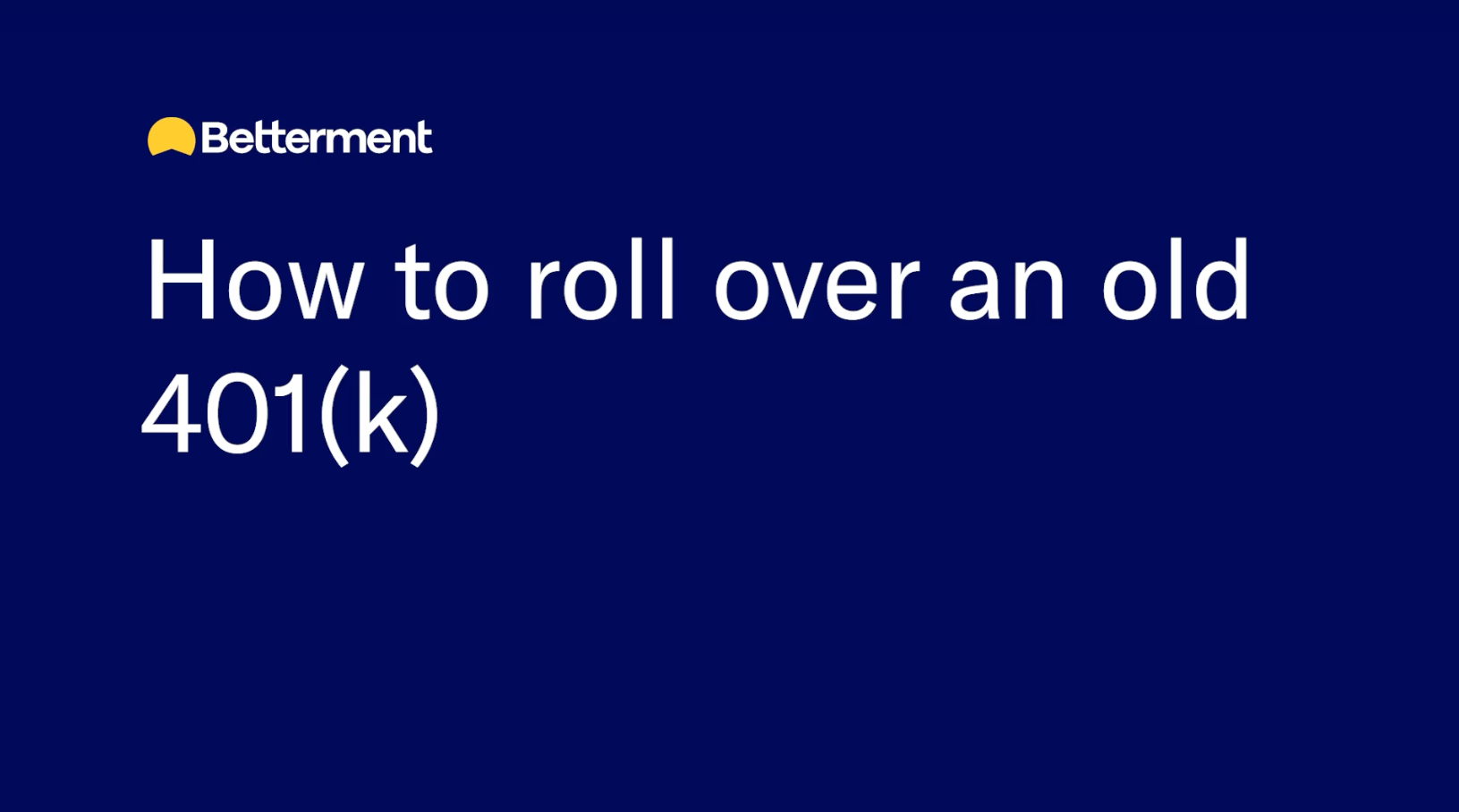
How to roll over an old 401(k)
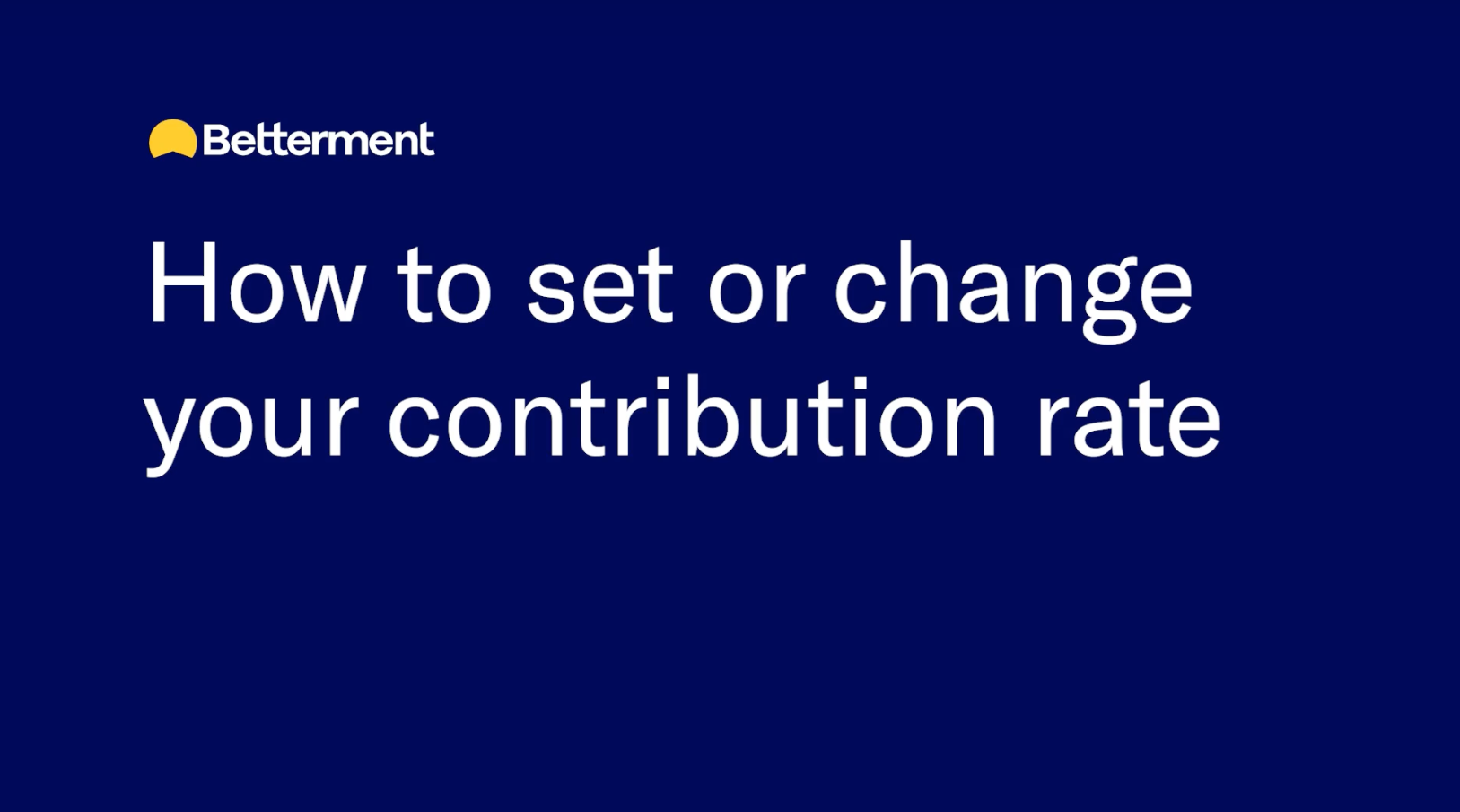
How to set or change your contribution rate
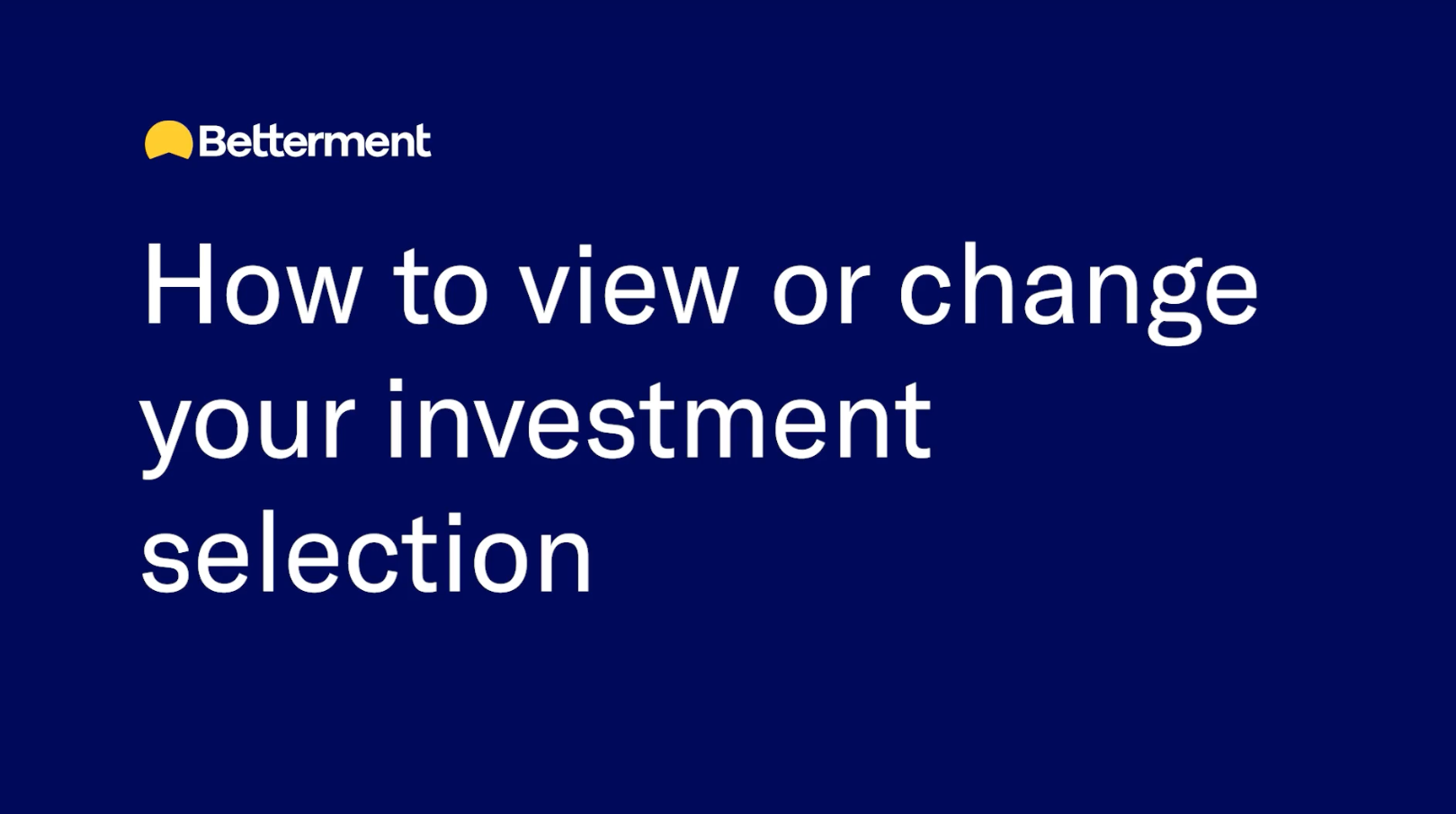
How to view or change your investment selection

An overview of the Betterment platform
We're more than your 401(k) provider.
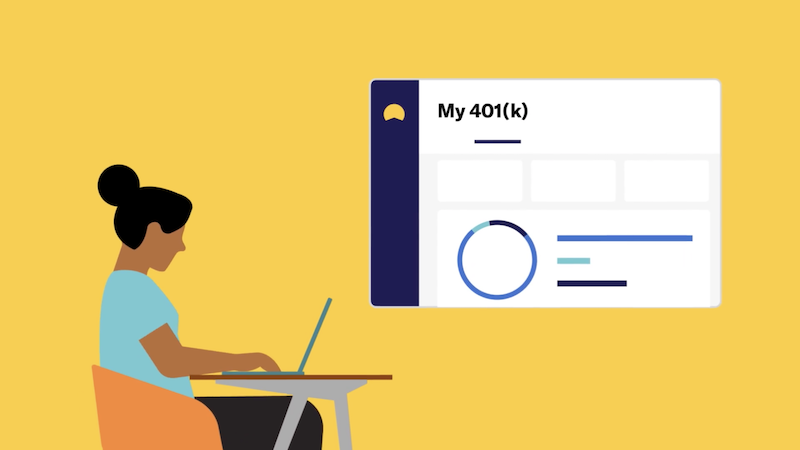
How to claim your Betterment 401(k)
A step-by-step demo of how to set up your account when logging in for the first time.

